Introduction
A C-124 Globemaster crashed into Knik Glacier east of Anchorage, Alaska, on November 22, 1952, killing all 52 service members on board. According to Alaskan historian Doug
Beckstead, when the plane went down the weather was brutal. The crew were flying blind, using their altimeter, a stopwatch, and a radio signal to find their way home. As they
flew above the Chugach Mountains, only minutes away from landing at Joint Base Elmendorf-Richardson, the massive C-124 Globemaster suffered a malfunction and began losing altitude.
The reason even this is known, explained Casey Grove and Mike Dunham at Stars & Stripes, is because a nearby Northwest pilot deciphered a scratchy radio signal over
his headset that said, “As long as we have to land, we might as well land here.” The plane plowed into the mountain at full speed and the bits of debris were covered by snow
before it could be found. Aside from a splash of debris spotted by a squadron of searchers that was lost to the elements within days, nothing was heard from “Old Shaky’s”
crew or passengers ever again until the wreckage was rediscovered in 2012.
For further information about this fatal flight, read
Tonja Anderson-Dell's book, Gifts from a Glacier- the
Quest for an American Flag and 52 Souls, that she
wrote regarding the hunt for her grandfather's military
airplane that crashed in Alaska November 22, 1952
heading for Anchorage, Alaska.
[KWE Note: This page opened on the Korean War Educator on July 4, 2012. Readers who have further information about the victims of this crash are welcome to contact Lynnita
Brown, 111 E. Houghton Street, Tuscola, IL 61953; ph. 217-253-4620 (home) or 217-253-5171 (store). E-mail lynnita@thekwe.org.]
Most recent additions to this page: February 22, 2020
Page Contents
Back to Page Contents
Manifest/casualties (crew & passenger)*
- Anderson, A/B Isaac W. Sr., 625th AC & W Sq 10th Air Div. [See http://findingthosewelost.com/]
- Berger, 2LT Alan (husband of Janice Berger, Brooklyn, NY) (Army)
- Budahn, A/2C Verne Chester (See In Memoriam section.)
- Buie, 2LT Reginald “Reggie” (See In Memoriam section.)
- Burns, A/2C Bateman R.
- Card, PVT Robert D. (See In Memoriam section.) (husband of Patsy A. Card, Hopeville, GA) (Army)
- Cheney, CAPT Alger M. (32) (CREW - first pilot) (See In Memoriam section.)
- Cody, A/1C Delroy C. (See In Memoriam section.)
- Condon, A/2C Thomas J. (Waukesha, WI)
- Coombes, CAPT. William Nelson, 31, 10th Air Rescue Group, Elmendorf AFB (Detroit, MI)
- Costley, SSGT Eugene R. (CREW - 2nd E) . (See In Memoriam section.)
- Draskey, CAPT Delbert D. (Chicago, IL) - Born in 1920 in Illinois, Draskey enlisted in the Army on May 26, 1942 in Chicago. He attended three years of college and
his civilian occupation was in the production of bakery products.
- Duvall, CAPT Kenneth J. (37) (CREW - aircraft commander from Vallejo, CA; wife Josephine R. of Tacoma, WA) (See In Memoriam section.)
- Dyer, A/2C Carroll R. (Salisbury, VT) (See In Memoriam section.)
- Goebel, CAPT Jerome H. (Chicago, IL)
- Green, PVT James R. (husband of Vera A. Green, Long Branch, NJ) (Army) (See In Memoriam section.)
- Hagen, TSGT Engolf W. (CREW - 1st E) (son of Mr. and Mrs. John E. Hagen, Roseau, MN) (See In Memoriam section.)
- Hoblit, COL Noel Elmer (See In Memoriam section.)
- Hooton-Caudle, A/1C Marion E. (Sylacauga, AL) (See In Memoriam section.)
- Ingram, A./1C George M. (CREW - Load Master) (See In Memoriam section.))
- Jackson, A 3/C Wayne Dean (CREW - Flight Attendant) (See In Memoriam section.)
- Jackson, MAJ William C.
- Kimball, A/3C James R. (CREW - FA) (son of James R. Kimball, Taos, NM)
- Kittle, PVT Leonard A. (See In Memoriam section.)
- Leaford, 2LT Jack R. Jr. (wife Clarissa P. Leaford, Oakland, CA)
- Loeffler, 2LT Edwin H. (son of Mr. & Mrs. Gustave A. Loeffler, Babylon, NY) (Army)
- Lyons, A/2C Thomas Stanley (See In Memoriam section.)
- Martin, A/3C Howard Eugene (See In Memoriam section.)
- Matthews, A/2C Loyd Lewis (See In Memoriam section.)
- McMann, A/2C Dan F. (February 25, 1930-1952), son of James Earl McMann (1890-1969) and Frances M. McMann (1902-1994) of Marinette, WI.
- Miller, A./2C Edward J. (See In Memoriam section.)
- Mize, A/2C Edmond W. "Eddie" (See In Memoriam section.)
- Moon, 2/LT Robert E. (Evanston, IL)
- Newsome, A/1C Sterling E. (Hearne, TX)
- Owen, A/2C Robert A. (CREW - Radio Operator) (son of Mr. and Mrs. Virgil Owen, Starke, FL)
- Ponikvar, CAPT John Edward Jr. - Born on July
15, 1922 in St. Louis County, Minnesota, son of John Edward and Frances Globokar Ponikvar.
Married to ___________________. Sisters Veda Frances
(World War II Navy veteran-Mrs. Lawrence Nobins),
Jenny (World War II veteran), and Mary Lou (Mrs.
Lawrence Meadows). He was stationed at Elmendorf AFB, Alaska at the time of the crash.
- Ray, SSGT James Herbert Jr. (Worthington, PA; had been stationed at Brookley AFB in Mobile, AL; wife Ava was pregnant with daughter Jamie at time of crash) (See
In Memoriam section.)
- Schnore, MSGT Edward J. - Army, Born December 22, 1910, he was the husband of Gertrude "Trudy" Huff Schnore, Richmond, VA; Mrs. Schnore (1921-1999) was a war bride from
Germany.
- Scott, A./3C Marlon L. (CREW - Radio Operator) (See In Memoriam section.)
- Seeboth, CDR Albert J. (Navy) (See In Memoriam section.)
- Sheda, 1/LT Donald A. (Berwyn, IL) He was born February 15, 1925. His daughter is Catherine Sheda Remus of Knoxville, TN. His remains were buried in Arlington
Cemetery in 2014. [See In Memoriam section.]
- Singleton, LT COL Lawrence Scroggs DDS (See In Memoriam section.)
- Smith, COL Eugene (Wilmington, DE) (See In Memoriam section.)
- Sprague, A/2C Conrad N. (CREW - 2nd E) (from Sequim, WA; survived by wife Dorothy Jean & son Dennis, age 4 of Tacoma, WA); member 1705th Air Transport Group at McChord
AFB)
- Stearns, MAJ Earl J. (survived by sons Greg, Bob, and Earl Jr. and wife Dixie Ann). He was a Marine. (See In Memoriam section.)
- Thigpen, A/2C Thomas C. (Picayune, MS)
- Tribble, CAPT Walter Perrin (Champaign, IL; born February 22, 1923; from Donalds, Abbeville County, South Carolina, son of Annie Tribble, brother of Jean Tribble)
- Turnbull, CAPT Robert W. (Belleville, IL) (See In Memoriam section.)
- Turner, 1Lt. William Irvin (CREW - navigator) (Pennsylvania) (See In Memoriam section.)
- Unger, TSGT Leonard G. (CREW - flight chief) (See In Memoriam section.)
- VanFossen, S/SGT Robert Dale (Greenbriar, AR) (See In Memoriam section.)
- White, A/2C Bernis F. (Fordyce, AR)
-------
*As of June 2014, the following remains have been recovered:
U.S. Army
- Lt. Col. Lawrence S. Singleton
- Pvt. James Green, Jr.
- Pvt. Leonard A. Kittle
U.S. Marine Corps
U.S. Navy
U.S. Air Force
- Col. Noel E. Hoblit
- Col. Eugene Smith
- Capt. Robert W. Turnbull
- 1st Lt. Donald Sheda
- 1st Lt. William L. Turner
- Tech. Sgt. Engolf W. Hagen
- Staff Sgt. James H. Ray
- Airman 1st Class Marion E. Hooton
- Airman 2nd Class Carroll R. Dyer
- Airman 2nd Class Thomas S. Lyons
- Airman 2nd Class Thomas C. Thigpen
- Airman 3rd Class Howard E. Martin
Back to Page Contents
Wreckage Discovered
"On June 14, 2012, the Alaska National Groundsmen flying on a Blackhawk helicopter discovered a debris of an aircraft inside Colony glacier during a routine flight. The glacier
is located 40 miles east of Anchorage, Alaska. Now, military investigators found that the wreckage from the plane found at the site correlates with the military plane crash in
1950s.
On November 22, 1952, an Air Force C-124A Globemaster crashed on Mount Gannett, killing all 52 people on board. The flight came from the McChord Air Force Base in Washington
State. It was the third Air Force transport plane to crash or go missing in Alaska that month, and the sixth in the Pacific Rim. After the crash, military teams tried to go to
the site, but bad weather always got in the way until it got buried in the snow and became part of the glacier.
The Alaska National Groundsmen recovered a life support system and bones from the glacier. Only the tail and flippers of the aircraft are intact, but the tail number will be
enough to confirm an identification. DNA matching with the living relatives of those on board can take up to six years. Because of this, military officials are still not counting
out other possibilities until further investigation is conducted."
--
"On June 10, 2012, an Alaskan Army National Guard UH-60 Black Hawk helicopter crew discovered what appeared to be an aircraft crash site while conducting a routine training
mission, the release said.
Following additional search and rescue missions by Joint Task Force-Alaska and the Alaska National Guard at the suspected crash site, JPAC forward-deployed a five-person team
to further survey and assess the site and develop recommendations for potential recovery operations in the future, according to the release.
With full knowledge and cooperation of local military units and governmental agencies in Alaska, the team will investigate the site for about three days, searching for any evidence
that may positively correlate the aircraft wreckage to a known incident, the release said.
Falling directly under the U.S. Pacific Command and employing more than 500 joint military and civilian personnel, JPAC, based at Joint Base Pearl Harbor-Hickam, Hawaii, continues
its search for the more than 83,000 Americans still missing from past conflicts. The ultimate goal of JPAC, and of the agencies involved in returning America’s heroes home, is
to conduct global search, recovery, and laboratory operations in order to support the Department of Defense’s personnel accounting efforts. issued today."
---
Remains of deadly 1950s Air Force crash found on Alaska glacier
By Casey Grove and Mike Dunham
Stars & Stripes
McClatchy Newspapers
Published: June 28, 2012
"ANCHORAGE, Alaska - Investigators say aircraft wreckage discovered this summer on a glacier in the mountains east of Anchorage came from an Air Force plane that crashed
in 1952, killing everyone on board.
The C-124 Globemaster carried 52 people, according to the Joint Prisoners of War, Missing in Action Accounting Command, which has military casualty experts looking at the
debris.
The crew of an Army National Guard UH-60 Black Hawk helicopter spotted the pieces at the tip of Colony Glacier, where it meets Inner Lake George deep in the Chugach Mountains
45 miles east of Anchorage. The JPAC investigators recovered fragments of the plane and possible human remains a few days later, Army Capt. Jamie Dobson said.
On Wednesday, Dobson said the plane is believed to be a Douglas C-124A Globemaster, a heavy-lifting transport plane that crashed Nov. 22, 1952, while approaching Anchorage.
The scattered wreckage has apparently been slowly moving with the glacier for 60 years, she said. The ice field where the wreckage was found earlier this month is more than
12 miles from the crash site. 'The evidence does positively correlate to that wreckage,' Dobson said.
The Globemaster was flying from McChord Air Force Base in Washington. With giant bay doors under its nose, the Globemaster, nicknamed 'Old Shaky,' was the largest cargo
plane in the American arsenal at the time, the only aircraft capable of carrying a tank or bulldozer _ or 200 soldiers.
On this flight, it carried 52 men, mostly Air Force and Army personnel and at least one from the Marine Corps and one from the Navy.
It passed Middleton Island, in the Gulf of Alaska south of Prince William Sound, en route to Elmendorf Air Force Base. At about 4 p.m., the captain of a Northwest Orient
Airlines passenger plane picked up a distress call.
A scratchy signal made the call almost impossible to understand, but the Northwest pilot heard, 'As long as we have to land, we might as well land here.' Silence followed.
Nobody heard from the plane again.
Details of the Globemaster's final moments were revealed Wednesday by Douglas Beckstead, the historian for the 673rd Air Base Wing at Joint Base Elmendorf-Richardson. Beckstead
was looking over microfilm copies of the official reports on the incident. 'The weather was very bad with heavy clouds,' Beckstead said. 'They were flying with no visual
references, going by altitude, a radio beacon and a stopwatch.' The bad weather continued for three days, until November 25, when 32 military planes begin to scour the
region. Four Coast Guard vessels searched Prince William Sound. The aerial searchers returned with reports of possible wreckage on several glaciers, but nothing conclusive,
Beckstead said.
On Nov. 28, Lt. Thomas Sullivan and Civil Air Patrol Lt. Terris Moore--at the time the president of the University of Alaska and an experienced pilot with extensive knowledge
of flying in Alaska mountains--spotted an apparent tail section sticking out of the snow. 'It was at the 8,100-foot level of Surprise Glacier,' said Beckstead. 'Almost
at the top of Mount Gannett.' Sided by steep cliffs, Gannett is 9,100 feet high.
Sullivan and Moore landed their Piper Super Cub and spent several hours on the ice confirming that the wreckage was that of the C-124.
There were no signs of life.
Fairbanks researcher and author Neil Davis knew Moore and spoke to him about what he'd seen for Davis' 1992 book, College Hills Chronicles. 'The scene that
met their eyes was not pleasant,' Davis said, reading from his book. 'The large aircraft had plowed into the mountainside at full speed, and except for a portion of the tail
section, everything else including the crew and passenger complement was strewn over the glacier in small pieces.' The image stuck with Moore over the years, Davis said.
'What he told me was it was a pretty damn grim situation,' Davis said.
It appeared that the crash triggered an avalanche that buried the smaller pieces of the wreck. 'One fact is obvious from observation,' Sullivan and Moore said in their reports.
'The aircraft is scattered over at least two acres and covered by 8 feet of fresh powder snow.'
According to an Anchorage Daily Times story, a recovery crew left Whittier by barge on November 29, 1952. They anchored the craft at the base of the glacier on Harrison
Fjord. Their progress to the crash site was hindered by avalanche conditions and the return of foul weather. After several days, they established a base camp at 5,500 feet,
still 8 miles from the tail section.
Helicopters went beyond their safe operating altitude to supply the crews. Winds hit 70 mph. Clouds and blowing snow darkened the slim hours of winter daylight. Men suffered
frostbite and rations ran low as the weather socked in. Accumulating snow trapped men in their sleeping bags as the tent sides collapsed, obliging them to dig each other out.
On December 9, they reached the tail section in blizzard conditions. Finding no trace of survivors or additional wreckage, they returned to base camp. 'On our way
up we had carefully set out trail markers,' Capt. William Hackett, an Army mountain climber who was part of the team, told the Times. 'They were barely discernible when we
went down this afternoon, being buried in about three feet of snow.'
Further recovery activity was called off. In time, the men on the plane were officially declared dead. Official letters were sent to the survivors of the deceased.
'I can't imagine what people were thinking back then,' said Dobson, the JPAC spokeswoman. 'They must've been so frustrated, thinking they knew where it was but unable
to find it.'
The C-124 crash made national headlines, one in a rash of military air fatalities at the end of 1952. It was just one of three military plane crashes in Alaska in a 15-day
period. That included a C-119 that vanished with 20 men on route to Kodiak on November 15, 1952.
Moore, who died a few years ago, received letters from family members of the Globemaster crash victims. The letters came from people all over the country hoping to learn
more, said Davis, who has read some of them. A couple in Mississippi wrote about losing their only son. A brother wanted to know if Moore had seen a man with curly, red hair
in the wreckage. Davis, reading one letter from siblings of a man killed in the crash, said some wrote just to talk about their missing loved ones. 'Our brother came
from a large family, seven brothers and five sisters, and he was married just two years ago and leaves a wife who is expecting a child in February,' one of the letters said.
'There are a lot of us who are going to miss him.'
The next step in the investigation is to start contacting family members of the plane's occupants, Dobson said. The process will probably include asking for DNA samples
in an attempt to return any human remains to the families, a process that could take up to six years to complete, she said.
Still, the Wednesday announcement brought a great deal of closure to Tonja Anderson and her father, Isaac Anderson Jr., just a 1-year-old when he lost his father and namesake
in the crash. The news was bittersweet, Tonja Anderson said. 'I cried, because it was more real,' she said. 'I called my father and said, 'They found him.' He broke down.
It wasn't just a story that was told to him any more, it was real. All he had before was the pictures.'
Anderson started looking into the crash in 2000, hoping that someday her grandfather's remains would be found and brought home. As the years rolled on, her grandmother died
and Anderson started meeting other family members of the victims through a Facebook page. The first of those was Mike Williams in Indiana, whose brother in-law was on the plane.
Williams, who dug deep enough to find the only photos of the plane's tail section on the mountainside, helped keep the search going, six decades after their relatives died,
Anderson said. I wasn't alone anymore,' she said.
Anderson said she kept pushing because they all still had questions. She knew JPAC had the ability to provide answers if they could find the plane. 'Whether it's a
bone or a dog tag, they bring something home, to say, 'I know it's not all of your grandpa but it's part of him. He didn't die giving his life to this country without us at
least trying to bring him home,' Anderson said. 'To the crewmen of the Black Hawk (that found it), I just want to say thank you. Because if they hadn't turned around to look,
it would've just vanished and we never would have seen it again.'"
Back to Page Contents
In Memoriam:
Anderson, A/B Isaac W. Sr.
Age 21 years, Isaac was survived by his wife Dorothy and one son, Isaac W. Anderson Jr., Tampa, FL. Airman Anderson had only been in the Air Force for less than a
year and a half. Isaac Jr. was just one year old at the time of the crash.
Budahn, A/2C Verne Chester
The son of Verne D. & Myrtle P. Sinell Budahn, Airman Budahn was from Arlington, Minnesota. He was born February 26, 1933, in Sibley County, Minnesota. He was
the brother of Earl Berthold Budahn (1940-2011), Alvin Budahn, Lewis Vernon Budahn (1926-2002), a baby sisiter (1927-1927), and Claude Wilbur Budahn (1932-2009). There
is a memorial stone in his honor in the Arlington Public Cemetery, Arlington, Minnesota.
Buie, 2LT Reginald “Reggie”
The son of Mrs. Ronald Charles (Grace M.) Wiles (1910-2003), Pensacola, Florida, Reggie was serving in the Army Corps of Engineers, loaned to the Air Force, +when the Globemaster
crashed. He was en route from McChord Air Base at Tacoma, Washington to Elmendorf Air Base, located about 50 miles from Anchorage. He was to have been in charge
of the electric and systems at his at his new post. Born September 15, 1930, he was from North Carolina. In July of 1951 or 1952 he married his wife, who was the
daughter of Mr. and Mrs. Clay Brower of Siler City, North Carolina. There is a marker in his memory in Barrancas National Cemetery, Pensacola. Notice of the crash
appeared in the Asheboro, North Carolina Courier-Tribune on December 11, 1952.
Card, PVT Robert Dale
Husband of Patsy A. Card, Hopeville, Georgia, Robert was serving with the Army's 813 Engineer Avn. Battalion when the plane went down. Born December 27, 1929, he was
the son of Mr. and Mrs. Harold Card of Kansas. There is a marker for him in the Lowell Cemetery, Lowell, Kansas.
Cheney, Capt. Alger
Captain Cheney was a veteran of World War II. During the Korean War he was a member of the 1705th Air Transport Group at McChord Air Force Base, Washington. On November
22, 1952, he was the first pilot of a C-124 Globemaster transport flying from Mc Cord Air Force Base to Elmendorf Air Force Base, Alaska. The plane crashed near Anchorage,
Alaska killing all fifty-two on board. Captain Cheney was awarded the National Defense Service Medal and the World War II Victory Medal. Born July 7, 1920 in Lubec, Maine,
he was survived by his wife Elaine, who lived in Tacoma, Washington. He was the son of Reginald Meredith and Margaret E. Yorke Cheney. His siblings were: Louise K., Clifton
E., Victor W., Bernard Lyman, Clayton, and Pearl A. Cheney.
Cody, Delroy
|
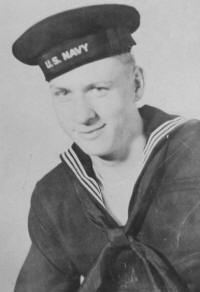
Delroy Cody
(Click picture for a larger view)
|
Born August 13, 1927, Delroy was the son of Hubert Nathan (Daniels) Cody and Margaret Sangster Henderson Cody. Delroy had siblings Elizabeth May Cody, who married
Rev. Doyle Anderson; Andrew Hubert Cody; Mabel Cody Stitik, Mrs. Calvin (Margaret Cody) Orton, and Mrs. Karl (Lucille Catherine Cody) Foust.
Mrs. Foust wrote to the KWE:
"My brother was on the C-124 Globemaster. As a young girl I was always hoping that perhaps an Eskimo picked up a serviceman and that he still could be living.
When you have no tangible proof that he is gone...you always hope and wonder. Many stories came out and I always thought if a body would be found again maybe they
would be preserved because of the cold freezing temperatures.
Delroy loved the outdoors. He loved to hunt and we ate what he brought in. My fathers always was proud of him. How I wish my father could be here today
and know that finally we have the closure from that plane crash so long ago. My sisters and older brother also would want to know for sure. But you know, because
our family trusted God and knew Heaven is for real...they all do know he is truly found in Heaven. How assuring that statement is for me.
Just before Delroy left on that fatal mission he proposed to a girl he was engaged to. I never met that girl, nor did I know anything about her. If your
readers know the families of any of the servicemen that Delroy served with and knew this piece of information, please let me know. I feel I cannot be happy until
ALL on that plane are identified." - Delroy's sister, Lucille Foust
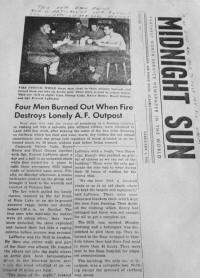
(Click picture for a larger view) |
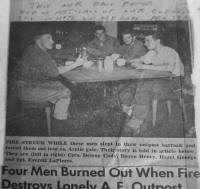
(Click picture for a larger view) |
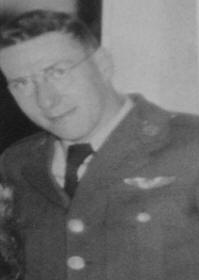
(Click picture for a larger view) |
Costley, Eugene Raymond "Gene"
|
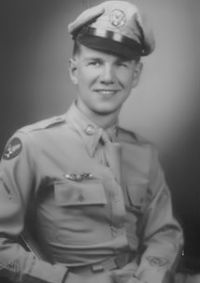
Eugene Raymond "Gene" Costley
|
Gene was a son of Mr. and Mrs. Raymond A. Costley of Elmira, New York. He was a 1947 graduate of Elmira Free Academy. His brother was Johnny Costley, who joined
the Air Force in January of 1951.
|
Duvall, Kenneth James
|
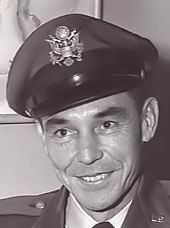
Kenneth James Duvall
|
The captain, Kenneth James Duvall, 37 at the time, was a native of San Francisco, and a 1934 graduate of Vallejo (CA) High School. He resided with his aunt, Sadie Lou, in
Litchfield while attending Arizona State College with his brothers, Claude and Allan. Ken graduated with a degree in accounting in 1939. He entered the infantry in 1941, shortly
after the attack on Pearl Harbor. He transferred to the Air Force and attended Officers Candidate School. He distinguished himself as a B17 bomber pilot, completing his 25th
mission one week before the Normandy invasion. He returned to the US and flew transport missions between Florida and Cuba. Discharged in 1946, he rejoined the Air Force in
1948 and flew the Berlin Airlift for a year. He returned to civilian life to resume a career in accounting when he was recalled to active duty in 1950, shortly before the outbreak
of hostilities in Korea. Captain Duvall was assigned to McChord Field to fly the giant Globemaster, the world's largest transport plane. The US Air Force recently recovered
and returned Captain Duvall's identification tags to his sole survivor, his niece, Debra, who resides in Mesa.
Dyer, Carroll R. "Bobby"
|
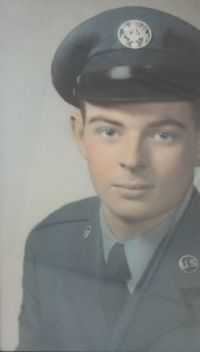
Carrol R. "Bobby" Dyer
|
"Carroll Robert “Bobby” Dyer was born on May 24, 1930, in Salisbury, Vermont. He and his dad ran Dyer’s Motorcycle Shop, dealing in Indian brand bikes, in what is now the
Salisbury Post Office building. The family, which included Bobby’s sisters, June and Jean, lived in a home behind the shop.
When Bobby’s dad, Carroll Francis Dyer, died in a motorcycle crash in 1945, Bobby took over the small enterprise at the tender age of 15. “He did quite a business there,”
recalled former Middlebury resident Walt Sears, one of Bobby’s friends. “He was a great lad. We both had motorcycles.” The young Dyer was a skilled mechanic and an adept
motorcycle rider, who was also endowed with a keen sense of humor, recalled Nick Cassarino, a Weybridge resident and another one of Bobby’s old pals.
Cassarino recalled visiting Bobby at his shop one Sunday morning during the late 1940s. Another motorcyclist had come in wanting Bobby to check how fast his bike would go.
Bobby left on the guy’s bike to take what they all thought would be a high-velocity run along a Route 7 south straightaway to hit a top speed that would be recorded by a red
arrow on the Indian’s speedometer. Bobby returned from his ride with the bike’s speedometer arrow pointing to a jaw dropping speed that most other guys in the shop knew was
impossible. But the customer bought the reading — even though Dyer had used his trusty screwdriver to manipulate the speedometer arrow.
Bobby’s younger sister June lived at Walt Sears’ house during the school year so that she could attend Middlebury High School. As a result, Bobby was around the Sears house
quite a bit. “I’d do something and my mom would give me holy hell; Bobby would do the same thing and it she thought it was quite all right,” Sears said with a chuckle.
Dyer enjoyed managing his motorcycle shop, but felt the tug of military service as the Korean War raged. So a year or two out of high school, Bobby enlisted in the United
States Air Force. “When he went into the service, I left my motorcycle at his shop for him to sell,” Cassarino said. Alas, Bobby Dyer would never have a chance to sell that
motorcycle, as Dyer’s first military mission would be his last, with his name added to a heart-wrenching roll call of U.S. service men and women lost in the maw of nature’s
elements while in service to their country."
BRINGING BOBBY HOME
"June (Dyer) Nadeau learned of the recovery of her brother’s remains this summer. “I’m relieved; it gives us a sense of closure,” she said on Tuesday from her camp
in Bridgeport. “(Bobby) and I were very close, so I am glad I will have him nearby.” Bobby was 13 months older than June. News of the crash shook the family back in 1952.
She takes small solace in the fact that his death was probably swift. “I still miss him,” June Nadeau said. “He was a wonderful brother who looked out for his baby sister all
the time.”
June Nadeau, her older sister Jean Baehr, Sears and Cassarino, now all in their 80s, will be at Bobby Dyer’s belated funeral service on August 15 at 11 a.m. So will various
town leaders and U.S. military officials, who will give Bobby the homecoming and sendoff he so richly deserves after having been lost, literally and metaphorically, after more
than six decades.
Tom Scanlon is a Salisbury selectman and adjutant of American Legion Post 27 in Middlebury. “The remains of any service member should be given the respect and handled with
the utmost dignity,” he said. “As a nation and as a community we should never forget those that have served and died for this great nation. After many decades, Bobby Dyer is
coming home to Salisbury where he will rest for an eternity. He gave his all and should be appropriately remembered for his supreme sacrifice.” Salisbury Selectwoman and town
cemetery committee member Martha Sullivan has helped coordinate Dyer’s impending funeral services with federal military officials. “So many of us are happy, after all
these years, that this is coming to a resolution,” Sullivan said. “We are happy our airman is coming home to stay.”
[Source: Addison County Independent, writer John Flowers, July 30, 2014]
Green, James Jr.
|
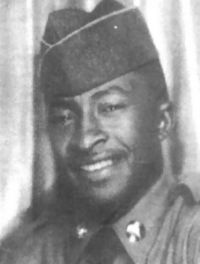
James Green Jr.
|
Private James Green, Jr., was born on November 15, 1931 in Georgia, the son of George and Ever Lee Green of Glenwood. He had five sisters, Ruby Jean Brewer of Hazelhurst,
Georiga, Jewel Josey of Americus, Georgia, Zadine Harris of Linden, New Jersey, Barbara Johnson of Glenwood, Georgia, and Gail Dixon of Alamo, Georgia: and two brothers, George
Green of Linden, New Jersey, and Troy Green of Irvington, New Jersey. After graduating from Dixon Training School in Vidalia, Green moved to Long Branch, NJ where he met his
wife, Vera Lee. He was buried in Home Missionary Cemetery, Spring Hill, Georgia, in 2014.
Hagen, Engolf Welton
Engolf Welton Hagen was born June 12, 1924 and died November 22, 1952 in a Globemaster crash. His remains were recovered June 12, 2012 through DNA supplied by a sister,
Violet Wacker (now deceased). Engolf was laid to rest next to his parents in Rose Hills Memorial Park, Whittier, California.
He is survived by his youngest sibling Eleanor Yeager. With the exception of the eldest brother James (who recently passed at 93 years of age), Gilbert, Engolf and
John were lost prematurely due to war related circumstances. Between 1942 and 1944, Hagen and his three brothers enlisted in the military to serve during World War II.
His eldest brother joined the Merchant Marines and was stationed at Fort MacArthur. Gilbert Hagen, two years Engolf’s senior, enlisted in the Army and survived the Japanese
bombing of Pearl Harbor. Engolf joined the Marine Corps and was stationed in the South Pacific. After the war, he re-enlisted, this time in the U.S. Air Force to serve
in the Korean War.
Engolf's parents, John Erickson Hagen (1881-1972) from North Dakota (of Norwegian descent) and Ellen Marie Sjodin Hagen (1891-1975) from Sweden, settled in Roseau, Minnesota
where they raised their 10 children on a large farm that John purchased from his parents.
Approximately 1942 to 1944, Engolf (along with all 3 of his brothers) enlisted into the military to serve their country during World War II. James, the eldest (b. 1918)
joined the Merchant Marines and was stationed at Fort McArthur, California. Gilbert (b. 1922) enlisted in the Army fought and survived the Japanese bombing of Pearl Harbor,
Hawaii. Engolf (b. 1924) joined the Marines and was stationed in the South Pacific. After the war, Engolf re-enlisted in the U.S. Air Force to serve in the Korean War. John
(b. 1925) joined the army and was stationed in Germany.
Hoblit, Noel Elmer
A member of the 39 Medical Group during World War II, Colonel Hoblit was from Utah/California. Born February 12, 1907, he was the husband of Virginia Helen Hoblit
who died December 12, 1994. He was the father of two sons. The eldest was Jerry Hoblit of Willis, Texas (a Vietnam veteran and retired Colonel).
Noel Elmer Hoblit was president of his senior class, St. Louis University, Class of 1938. He was a 1st Lieutenant in the ROTC and member of Phi Delta Theta and Psi
Omega. A resident of Pocatello, Idaho, e received a Doctor of Dental Surgery degree.
---
"WILLIS, Texas — A 77-year-old Southeast Texas man hopes to one day be able to bury the remains of his father after the discovery last year in an Alaskan glacier of a military
plane that crashed in 1952, killing all aboard.
Retired Col. Jerry Hoblit, a Vietnam veteran, was 16 when he learned that his father, Col. Noel Hoblit, was among the 52 people killed when the Air Force C-124A Globemaster
crashed on Nov. 22, 1952, on Mount Gannett. “I was asleep and I heard the commotion downstairs. My mother was crying,” Jerry Hoblit, who lives in Willis, about 50 miles north
of Houston, told The Courier of Montgomery County. “Being an Air Force brat, I knew exactly what was going on.”
The debris was discovered in June 2012 while Alaska National Guardsmen were flying a Blackhawk helicopter during a training mission near the glacier about 40 miles east
of Anchorage. After the crash, military teams tried to go to the site, but constant bad weather got in the way until it got buried and became part of the glacier.
“I didn’t know my father until I was 9, because of World War II,” Hoblit told the newspaper. “But from age 9 until I was 16, I got to know him by skiing with him every Sunday
in the Cascade Mountains. Because of the bond we made while skiing, I became a life-long skiing enthusiast,” he said. “He was bringing me a pair of Henke ski boots when they
crashed.”
He told The Associated Press that he’s not yet gotten word on whether his father’s remains have been identified or whether any of his belongings have been found. He says
if his father’s remains are found he and his brother will arrange a memorial service and likely bury the remains at the marker for his father in Arlington National Cemetery.
Hoblit said when he heard the news that his father died in the crash, his first reaction was that he knew he wasn’t a child anymore. “I had to grow up,” Hoblit said. “My
little brother was ten years younger than me and I thought ‘he is never going to know our father.’”
He and his brother both went to the U.S. Military Academy at West Point and then into the Air Force. Hoblit flew three tours during the Vietnam War. “Living on an
Air Force base, I always wanted to be a pilot,” Hoblit said. “My dad wanted me to be in medicine.”
[Source: Associated Press, September 22, 2013]
---
"WILLIS — A Willis Vietnam War hero is getting closure, now that he soon will be able to bury his father’s remains after 60 years.
Retired Col. Jerry Hoblit, 77, a resident of Corinthian Point, received a phone call from sister-in-law Nancy Hoblit in June 2012 that debris from an aircraft was discovered
inside a glacier 40 miles east of Anchorage, Alaska. Hoblit’s father, Col. Noel Hoblit, was aboard that flight on Nov. 22, 1952. Sixty years later, on June 14, 2012,
the Alaska National Groundsmen, flying on a Blackhawk helicopter, discovered the debris inside the Colony Glacier during a routine flight.
The Air Force C-124A Globemaster crashed on Mount Gannett, killing all 52 people on board. The flight took off from McChord Air Force Base in Washington state. It was the
third Air Force transport plane to crash or go missing in Alaska that month, and the sixth in the Pacific Rim, Jerry Hoblit said.
After the crash, military teams tried to go to the site, but constant bad weather got in the way until it got buried in the snow and became part of the glacier. “I didn’t
know my father until I was nine, because of World War II,” Hoblit said. “But from age 9 until I was 16, I got to know him by skiing with him every Sunday in the Cascade Mountains.”
Hoblit was 16 when a Protestant chaplain and a Wing Commander came early in the morning knocking on his mother’s door. “I was asleep and I heard the commotion downstairs.
My mother was crying,” Hoblit said. “Being an Air Force brat, I knew exactly what was going on.”
According to Alaskan historian Doug Beckstead, when the plane went down, the weather was brutal. The crew was flying blind, using their altimeter, a stopwatch, and a radio
signal to find their way home. As they flew above the Chugach Mountains, only minutes away from landing at Joint Base Elmendorf-Richardson, the massive C-124 Globemaster suffered
a malfunction and began losing altitude. The plane plowed into the mountain at full speed, debris covered by snow before it could be found. Aside from scattered debris spotted
by a squadron of searchers, all was lost to the elements within days. Nothing more was heard from the passengers or crew.
“They told us that the chances of survival were slim, because they crashed into a mountain,” Hoblit said. “There was no rescue attempt, no capability at that time, to get
a rescue crew to the crash site.”
With giant bay doors under its nose, the Globemaster, nicknamed “Old Shaky,” was the largest cargo plane in the American arsenal at the time, the only aircraft capable of
carrying a tank or bulldozer or 200 soldiers. On this flight, it carried 52 men, mostly Air Force and Army personnel and at least one from the Marine Corps and one from the
Navy.
Hoblit said that when he heard the news that his father died in the crash, his first reaction was that he knew he wasn’t a child anymore. “I had to grow up,” Hoblit said.
“My little brother was ten years younger than me and I thought ‘he is never going to know our father.’” Hoblit said that while his father was serving in World War II,
he missed him every day. At 16, he wasn’t ready to be a father, but would certainly try and set an example for his younger brother, he said. Hoblit did his best.
“I went to West Point and ten years later, he followed me to West Point,” Hoblit said. “I went into the Air Force and my brother went into the Air Force. I flew in southeast
Asia and ten years later, my brother did, too.” Both received an appointment and scholarship to the United States Military Academy at West Point.
“My mother went from being a colonel’s wife to receiving $75 a month as a widow,” Hoblit said. “So, there wasn’t any money for college. Hoblit tells the story of how his
mother was determined to get her son an education. “I had the family car at school and my mom hitchhiked to an appointment to meet Barry Goldwater, the senator of Arizona at
that time,” he said. “Later, he was a presidential candidate.” His mother told Goldwater that Hoblit wanted to go to the Naval Academy in Annapolis, Maryland. “I don’t want
to waste him on the naval academy, I’ll send him to West Point,” Hoblit said Goldwater told his mother. “Those were his exact words.”
After graduation in 1958, he joined the Air Force and then flew three tours during the Vietnam War. Hoblit flew 100 missions over North Vietnam with his wingman, Tom Wilson,
the electronic weapons officer, both captains at the time, in their “Thud,” an F-105 Thunderchief. They were two of the first Wild Weasels in the history of the U.S. Air Force.
The Wild Weasel mission was to protect strike packages from enemy surface-to-air missile sites by searching them out and engaging them. “Living on an air force base, I always
wanted to be a pilot,” Hoblit said. “My dad wanted me to be in medicine.”
Hoblit remembered many memories with his father, skiing every Sunday. “Because of the bond we made while skiing, I became a life-long skiing enthusiast, he said. “He was
bringing me a pair of Henke ski boots when they crashed. They were all the rage back then.”
Now, Hoblit awaits the remains of his father and hopes to receive some of his dad’s belongings next year. “All the items from the wreckage are being collected and catalogued,”
Hoblit said. “All remains are being held and DNA tested."
[Source: The Courier, article by Kimberly Sutton, September 21, 2013]
Hooten-Caudle, Marion E. "Hap"
|
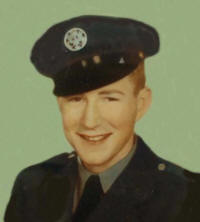
Hap Hooton-Caudle
(Click picture for a larger view)
|
Marion Hooton-Caudle was born on November 18, 1929 in Sylacauga, Alabama, and served his country in the U. S. Air Force. He celebrated his 23rd birthday just four days before
the crash. As an Airman First Class aboard a C-124 Globemaster he was one of 11 crewmembers (and 41 passengers) killed when the plane crashed on Alaska's Colony Glacier
on November 22, 1952. Airman Hooton had previously made many successful flights from McChord AFB in Washington State en route through Alaska and on to Japan, Korea, the Philippines,
and Hawaii in his military career. At the time of the plane crash he was survived by mother, Mary Susan Caudle; step-father, G.B. Caudle; and sister, Maxene Hooten
Lybrand.
Due to bad weather and extremely dangerous conditions the remains of Airman Hooton and the other crewmembers were not recovered until 2012. He was brought home to Alabama
for burial on October 23, 2014 in Evergreen Memorial Cemetery, Sylacauga. His only living relatives at that time were his nieces Jamie Aldridge, Suzi Adams, and Becky Elders.
Ingram, George Marion
George Marion Ingram, 23, formerly of Pontotoc, Mississippi, and Beloit, Wisconsin, died
on November 22, 1952, when the U.S. Air Force C-124 he was aboard crashed near Anchorage,
Alaska. George was born on March 10, 1929 in Pontotoc, Mississippi, the son of Frank C.
and Viola H. (Howard) Ingram. When George was a teenager the family moved to Beloit, Wisconsin
and became members of Emmanuel Baptist church. Many of the Ingram family are still members to
this day. As a young man George enlisted into the United States Air Force and attained the rank
of A1C (Airman First Class). On July 26, 1951 George was assigned to the 34th Air Transport
Squadron at McChord Air Force Base in Washington. He was scheduled to be part of the crew on the
flight of a Douglas C-124 Globemaster departing on November 22, 1925 from McChord Air Force Base
and scheduled to land at Elmendorf Air Force Base in Anchorage, Alaska. On the flight manifest
George was listed as the "Loadmaster". During the flight it is documented that the aircraft
encountered extremely severe weather conditions. Around 4pm on November 22, 1952, a distress
call from the C-124 was faintly heard by a Northwest Orient Airlines Commercial flight. The
reception was poor, but the Northwest captain made out the sentence: "As long as we have to
land, we might as well land here." No further communication from the Air Force C-124 was ever
heard again and subsequently the plane never arrived at Elmendorf. Due to the poor weather
conditions in the area at the time of the disappearance of the C-124, search efforts couldn't begin
until three days after the plane went missing. The crash site and wreckage were discovered on
November 28, 1952 by an officer of the 10th Air Rescue Squadron along with a member of the Fairbanks
Civil Air Patrol. The pair spotted the tail section of the C-124 sticking out of the snow at an
elevation of 8,100 feet, close to the summit of Mount Gannett. On December 9, 1952 a recovery crew
once again reached the tail section, but found no trace of survivors or any additional wreckage.
They were forced to call off any further search and rescue operations by the inhospitable conditions
and to return to base camp. Shortly thereafter, the U.S. Air Force declared that the 11 crew
members, and the 41 other service members were deceased. All traces of the plane and its passengers
were lost for another 60 years. On June 9, 2012 the wreckage was spotted by the crew of an Alaska
National Guard Black Hawk UH-60 Helicopter during a routine training mission. It was located 45
miles east of Anchorage, Alaska at the tip of the Colony Glacier, where the glacier meets Inner Lake
George. The rediscovery site was more than 12 miles from the original location because it was
resting on the moving flow of the Colony Glacier for the past 60 years. On June 28, 2012, the U.S.
Military announced the discovery of the wreckage. Shortly thereafter a recovery operation was
started by the Joint POW/MIA Accounting Command. On June 18, 2014 the Department of Defense
announced that the remains of 17 of the victims had been identified so far through DNA samples and
that the remains would be returned to their families. At the time of his death, George was
survived by his parents, and seven brothers, Frank, Richard, Halbert, Eleas, William, Walter, and Roy.
They have all since passed away. George is survived by numerous family members including, nieces,
nephews, cousins, and other relatives. Soon after the announcement of his death a memorial service
was held in Pontotoc, Mississippi. Services with military honors provided by the U.S. Air Force are
currently pending. The recovered remains of Airman First Class George Marion Ingram will be laid to rest
close to his parents gravesite at Eastlawn Cemetery in Beloit, Wisconsin. Hansen-Gravitt Funeral Home
424 Prospect Street, Beloit, Wisconsin 53511 is honored to be assisting with the arrangements. Online
condolences can be shared at www.hansengravitt.com.
Jackson, Wayne Dean
|
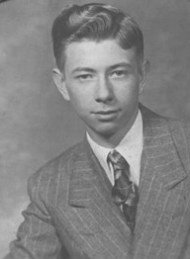
Wayne Dean Jackson
|
Born September 5, 1931 in Schuyler County, Missouri, Wayne Dean Jackson was the son of Clarence (1890-1983) and Hazel Alice Drake (1905-1999) Jackson of Downing, Missouri.
A memorial stone in his honor is located in the Downing Cemetery, Downing, MO.
See Newspaper Articles section.
|
Kittle, Leonard Albert
|
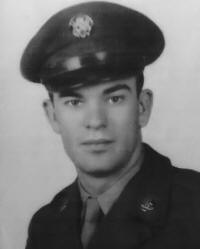
Leonard Albert Kittle
(Click picture for a larger view)
|
Leonard was the son of Hazard and Mary Jane Young Kittle of Caney, KS. He was born October 13, 1929. His wife was Sandra S. Kittle of Caney. Leonard had
siblings Beatrice Kittle Crawford and James Kittle. James died in Diamond, OK.
--
Born October 13, 1929, in Caney to Hazard and Mary Jane Kittle, Leonard Albert Kittle was the third of his parents’ four children. He played basketball and football at Caney
High School, where he graduated in 1949.
Enlisting in the Army in February 1952, he was assigned to Alaska after training. Just a few weeks later, though, Kittle was back in Caney: His daughter, Linda, had been
born, and he was granted leave to see her. “I’m so thankful that he had those three weeks to get to know her,” Kozak said. “She would sleep on his chest. They bonded
quickly.”
Tragically, it was after that trip home, when Kittle was returning to his base, that his transport aircraft — a C-124 Globemaster — crashed on Mt. Gannett outside of Anchorage.
Word of the incident rocked his hometown. “Leonard Kittle was a wiry, capable, resourceful boy,” Caney newspaper editor H.K. George wrote on November 25, 1952. “If that plane
landed with the Caney soldier still having a fighting chance for survival, the Caney boy is the type who would come through. Leonard Kittle was that kind of boy.”
But neither Kittle or any of the others — 11 crew members and 40 servicemen, representing all four branches — came through. Recovery efforts, foiled by icy weather and impassable
terrain, had to be abandoned. Accepting that the plane had been reduced to “smithereens,” leaving little to recover, Kozak forced herself to go on with her life, a widow at
only 17. Eventually, she married again. The family bought a tombstone for Kittle next to his mother’s in the cemetery. It seemed unlikely, though, that it would ever mark an
actual grave.
But in June 2012, that changed: An Alaska National Guard team on a training mission discovered the crash site. A glacier had moved it 12 miles from its original location.
Recovery experts moved in, and to date, remains of 17 of the men have been recovered and identified, according to the Department of Defense. The site will continue to be monitored
and more recoveries are possible, officials said.
For Linda Erickson, Kittle’s daughter, news of the recovery was unbelievable. She never knew her father, but she learned enough from family over the years to form a good
mental picture. “And my mom has told me even more recently” with the excitement surrounding his return, said Erickson, also of East Troy, Wisconsin.
One of her mother’s favorite memories is of how it all began: It was a whirlwind courtship, Caney-style. Leonard Kittle and Sandra Sanders, also from Caney, married on September
14, 1950. He was 21, she 15. Sandra Kozak, now 80, remembers the day she and Kittle met: She was walking home from school when he pulled his car alongside, offering her a ride.
“Oh, I knew who Leonard was already,” she said. “I was very young and I just idolized him. I loved his outgoing personality.” She remembers well his love for his motorcycle,
which she enjoyed riding on the back of, and cars. He consented to give the motorcycle up when they married, at his mother’s behest. But his car — not a chance. “I can’t remember
what it was. Just that it was fast,” Kozak said. In their short time together, the couple hit the road often, she added, including trips to Tulsa to see their favorite act:
Bob Wills and the Texas Playboys at the Cain’s Ballroom. Erickson missed out on all of this. Despite having never known her father, though, she now feels closer to him than
ever. “He was someone who was very full of life,” Erickson said. “It’s great that this is happening. It’s long overdue.”
Kittle’s other survivors include a sister, Beatrice Crawford of Bartlesville; a grandson and two great-granddaughters. Leonard Kittle was laid to rest next to his
mother in Sunnyside Cemetery, Caney, Kansas.
[Source: Tim Stanley, Staff Writer, Tulsa World newspaper, June 20, 2014]
Lyons, Thomas Stanley "Tommy"
|
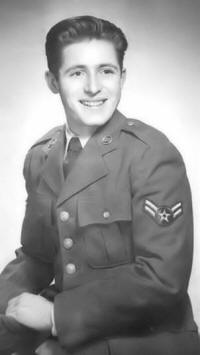
Thomas Stanley "Tommy" Lyons
(Click picture for a larger view)
|
Tom Lyons is coming home.
"It’s not the Brooklyn home he left as a teen to serve his country as an airman during the Korean War. And it’s not the snowy grave where Lyons, forever 19,and 51 others
lay buried for six decades after a C-124 Globemaster slammed into an Alaskan glacier during a blizzard on Nov. 22, 1952. But when his lone sibling, Geraldine Evans, learned
his remains had been found, she decided to bury him near the Boca Raton home where she’d retired. So on Friday morning, Thomas Stanley Lyons will receive full military
honors at the South Florida National Cemetery west of Lake Worth.
“He was just a kid,” Evans said from her oceanfront Boca Raton condo. One of Geraldine’s five children, son Tommy, flew to Hawaii, where the remains were identified, to
escort the man for whom he’s named. That flight arrived Thursday at rainy Fort Lauderdale-Hollywood International Airport, and Lyons was taken to a northern Broward County
funeral home.
Geraldine Evans was moved by the care with which the government handled her brother’s homecoming. “We didn’t stop at one red light,” Evans said. “The government is paying
for everything. This has cost me nothing.”
“Lonesome,” the widow and retired nurse said of growing up without her brother. “He was my best friend. I was 14. One minute I have somebody, a companion in the house, somebody
to fight with and play with, fool around with. And he was gone.” She said her brother was an artist and musician, but as the son of a Brooklyn mechanic, “the money wasn’t there
for him to to go to an art school or a music school. He decided to go the Air Force. He died within a year of enlisting.”
Geraldine Evans said her family had been told right away of the crash, and when the body hadn’t been recovered in a year, they opted for a memorial service at their Methodist
church in Brooklyn. “To me, that was his funeral,” she said. “In fact, we call this his ‘homecoming.’”
The plane had crashed into Colony Glacier as it flew from an air base in Washington state to Elmendorf Air Base in Anchorage with a crew of 11 and 41 passengers. Continuing
bad weather blocked immediate recovery, and as the harsh arctic winter set in, search parties were unable to get to the site.
It would be June 9, 2012, when an Alaska National Guard Black Hawk helicopter crew spotted the wreckage during a training mission. Three days later, another team landed.
Later that month, a special “missing in action” task force team came to the site. It returned in 2013. The military was able to identify 17 sets of remains, which are being
returned to relatives. The Pentagon announced the 17 names June 18.
Sadly, authorities didn’t find a lot of Lyons’ body. But, amazingly, his sister said, they found his frozen wallet intact. “You could see his Air Force ID, his shipping
orders, money,” Geraldine Evans said.
Tom’s mother died just before he was positively identified. “She lived to be 101-and-a-half,” Evans said. “She missed it by a month. But I’m sure she knows it.”
[Source: PalmBeachPost.com, July 17, 2014. Tommy Lyons was born March 29, 1933.]
Martin, Howard Eugene
|
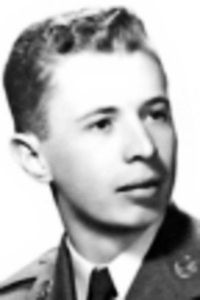
Howard Eugene Martin
|
"ELWOOD — USAF Airman 3/C Howard Eugene Martin, age 21 of Elwood, died on November 22, 1952, near Anchorage, Alaska, following a tragic military airplane crash. He was a
passenger aboard a C-124 Globemaster military air transport when the plane impacted Mt. Gannett killing a total of 52 servicemen. There were no survivors, and recovery was
never possible. His remains were recovered from Colony Glacier by the Joint POW/MIA Accounting Command (JPAC) during the summers of 2012 and 2013 — 60 years after the accident
following the melting of the glacier at the crash site. He was officially positively identified on his 83rd birthday, April 18, 2014.
Howard was born April 18, 1931, in Alexandria, the son of Lester and Mona “Ruth” (Baker) Martin. He grew up in the Dundee community, just east of Elwood. He had graduated
in 1949 from Frankton High School and worked in production at Delco Remy in Anderson briefly while attending Ball State University. Howard proudly enlisted with the U.S. Air
Force on December 14, 1951, in order to serve his country, and lost his life in service less than one year later. His family has never forgotten his sacrifice.
Howard’s family includes six siblings, Paul (wife, Pat) Martin of Frankton, Charles “Max” (wife, Clara Lou) of Wabash, Kay Marling of Anderson, Ray (wife, Janice) Martin
of Converse, Fran (husband, Mike) Williams of Elwood, and James Martin (companion, Marsha Minthorn) of Alexandria; and numerous nieces and nephews. His death preceded both
his father who died in 1972 and mother who died in 1999.
Howard’s family is grateful that his remains will be flown from U.S. Military facilities in Hawaii to Indianapolis International Airport and be returned home to the Elwood
community on Thursday, July 10, 2014. His casketed remains, along with his family in procession, will be escorted by the Elwood Police Department, the Indiana State Police,
and members of the Indiana Rolling Thunder and Indiana Patriot Guard the entire way from Indianapolis back to Elwood. The procession’s arrival into Elwood is estimated to be
around 1:15 p.m. and several veterans’ organizations along with local residents plan to line South Anderson street from “P” Street to Copher-Fesler-May Funeral home to welcome
him home.
A funeral service honoring Howard’s life and sacrifice will be conducted at 1 p.m. Saturday, July 12, 2014, at Copher-Fesler-May Funeral Home in Elwood with Pastor Gary
Cable of the Anderson First Church of the Nazarene officiating; remarks by Mayor Ron Arnold on behalf of the City of Elwood; and a dedication by Skip Whitenack on behalf of
the Indiana Veterans of Foreign Wars. Burial will follow in the Elwood City Cemetery and will include full military honors by the U.S. Military, the Elwood VFW, Elwood American
Legion, and Indiana Patriot Guard teams. Visitation for family and friends will be held from 11 a.m. to 1 p.m. prior to the funeral at the funeral home.
[Source: The Herald Bulletin, July 09 2014]
Matthews, A/2C Loyd Lewis
My name is Carolyn Simmons and my brother A/2C Loyd L. Matthews of Union, Mississippi, was aboard the C-124 Globemaster that crashed in 1952 and debris recently found.
We spent many years researching anything we could regarding the crash. I contacted Dr. Terris Moore (University of Alaska) who landed his Piper Cub on Suprise Glacier
with an Air Force Major aboard to identify the plane at the time it happened. He was so kind to answer my letters. We obtained a copy of the crash report when it
became available and in 1991 a friend of ours in Anchorage flew me to Mt. Gannett and I was able to drop flowers onto the mountain. At least all of this was done while
my parents were still alive. Loyd was the only son of Alva L. and Mildred Matthews, now deceased. Loyd's only sibling is Carolyn Matthews Simmons, Union, MS.
McMann, A/2C Dan F.
Dan was born February 25, 1930, son of James Earl
McMann (1890-1969) and Frances M. McMann (1902-1994)
of Marinette, Wisconsin.
Miller, A/2C Edward J.
A2C Edward J. Miller of Evansville, Wisconsin, was born June 22, 1931, the only son of Ernest P. Miller (1901-1954) and Laurene Durner Miller (1904-1964). He was the
brother of Doloris Miller McCutcheon, Dorothy Miller Wheaton and Nancy Miller Cox. There is a memorial marker in the Durner family plot at Maple Hill Cemetery, Evansville,
Wisconsin.
Mize, A/2C Edmond W. "Eddie"
Born October 25, 1933, he was the son of William Edmond Mize (1902-1987) and Dortha Forrester Mize (1906-1996) of Rossville, Georgia. He was also the brother off Rachel
Mize Holbrook, Joe Mize, and Barbara Mize Benton. Eddie Mize has a marker in the Memorial Park Cemetery, Plant City, FL.
Ray, James Herbert Jr.
Staff Sergeant James Herbert Ray Jr. was a passenger on a USAF C-124 Globemaster that crashed near Anchorage, Alaska on November 22, 1952, killing all 52 people aboard.
The wreckage was located shortly after but was soon lost to snow and ice and remained lost for 60 years. Then in 2012, melting glacial ice exposed enough of the wreckage to
be spotted by a passing Blackhawk helicopter on a training mission. Since then, 17 groups of remains have been identified through DNA testing and Sergeant Ray's was one of
them.
Ray was born Feb. 18, 1916, in East Butler, the son of James H. Ray Sr. and Mary Lamison Ray. He later moved with his family to Nichola, a coal mining town, now long abandoned
in Armstrong County near Worthington. He was drafted into the Army in February 1942 and assigned to the then Army Air Corp., which shortly became the Army Air Force. Following
World War II, he returned to his former job as a machinist at the Cooper-Bessemer Company in Grove City, and then in 1947 re-enlisted in the Air Force, by then a separate military
service. He reported for duty at the Brookley Air Force Base in Mobile, Alabama, where he met his future wife, Eva Hare. They were married in 1952.
As in World War II, his new Air Force service consisted primarily of overseeing the loading, securing and unloading of air cargo. He had spent much of World War II in the
Azores with the Air Transport Command and flying on cargo planes into various places in the European Theater. In his new role, he worked with cargo going to the Berlin Airlift,
regularly flying into Berlin from the beginning of the airlift in June 1948 until the airlift's conclusion September 30, 1949.
His daughter, Jamie Swift, was born after his death and now resides in Pensacola, Florida. His wife, Eva, died in 1966, and others close to him who are no longer alive include
his parents; his sisters, Sara Ellenberger, Elsie Couch, Bernice Jean Maley; and brothers, Wilbert, William and Adam. Family members still living, in addition to his daughter,
Jamie, are his sisters, Martha Rider Ellenberger and Shirley Hardies; and his brothers, George, Perry, Richard and Donald.
Friends will be received from 9 a.m. until time of services at 11 a.m. Saturday, July 5, 2014, at the F. Duane Snyder Funeral Home in Worthington, followed by military honors
at the graveside in the Worthington Presbyterian Cemetery with the USAF Honor Guard participating.
---
"As a boy growing up in the coal town of Nichola in Armstrong County in the 1930s, Richard Ray idolized his adult brother, James, whom the family called Herb. Herb Ray used
to take his kid brother trout fishing in Buffalo Creek. The two once sneaked onto a back road and pilfered blueberries from a neighbor's patch.
When he was 19, in 1952, Richard Ray was a radioman on a Navy repair ship and Herb was in the Air Force. Richard recalls someone rousing him from sleep on the ship and handing
him a telegram that said his brother and 51 other servicemen were missing in a plane crash in Alaska. “It just stunned me completely. I didn't want to believe it,” said Ray,
79, of Indiana, Pa. “At least they're not lost souls anymore.”
For years, no one knew the precise location of Herb Ray's plane. Then, on June 10, Alaska Army National Guardsmen flying in a Blackhawk helicopter found debris inside Colony
glacier 40 miles east of Anchorage — the Air Force C-124A Globemaster that slammed into Mount Gannett on November 22, 1952. “I was looking forward to this for so long I forgot
I was looking forward to it,” Ray said.
Recovery crews found some remains, though it may take years to identify them. Notifying families falls on the shoulders of Allen Cronin, chief of the past conflicts branch
for Air Force Mortuary Affairs in Dover, Delaware. “Even the ones we give good news to, we open up the wounds of that loss,” said Cronin. Ray and his brother Don, 74, of Poland,
Ohio, furnished DNA samples, swabs from their mouths, to possibly help identify their brother.
The third of 13 children, of whom eight survive, Herb Ray stood 5-foot-6 with dark brown hair. In one old photo, he stands next to his father's 1935 Ford Standard and stares
unemotionally, as his dad used to do. Family members keep the aged photos and newspaper clippings about him, because few tangible remembrances of him exist. His name is inscribed
on a bronze plaque next to his parents' grave in Worthington Presbyterian Cemetery and on his wife Eva's tombstone in Mobile, Alabama.
Herb could walk on his hands to please his begging brothers and sisters. He unsnagged his little brother's fishing line without complaint. Richard remembers his joy when
his brother stopped at a roadside market after World War II and brought home a rare treat — bags of bananas. Herb worked in the coal mines after finishing eighth grade and
then at a service station. He took classes in Pittsburgh to become a machinist and worked in Grove City at the former Cooper-Bessemer, a maker of compressors and engines.
The military drafted him in 1942 and he became responsible for loading and unloading cargo planes. He returned to civilian life but, perhaps beckoned by wanderlust, joined
the Air Force. He served in the Berlin Airlift and met his wife while stationed in Alabama. When he transferred to Alaska as a staff sergeant, he took the fateful flight from
McChord Air Force Base in Washington to scout homes for his family, said his daughter, Jamie Swift, 59, of Pensacola, Florida. With visibility poor, the plane struck
the mountain at about 300 mph at the 8,000-foot level, according to newspaper accounts.
Swift never knew her father; her mother was six months pregnant when he died. Swift was 13 when her mother died of a heart attack at age 40. “I think it was too hard for
her,” she said. She wants her father's remains returned to Pennsylvania, to the trout streams, blueberry patches and country roads he knew and loved."
[Source: Trib Total Media, article authored by staff writer, Bill Zlatos, published September 01, 2012]
Scott, A/3C Marlon L.
From Lebanon, Indiana, he was the son of Lawrence D. Scott). A member of Marlon's family, Stephen "Steve" Scott Sr., has published a book entitled, "The Longest
Flight Home" (AuthorHouse 2013) about how the re-discovery of the airplane wreck site has brought closure to his family.
Seeboth, CDR Albert J.
Commander Seeboth was commanding officer of the Naval Petroleum Reserve No. 4 when he was lost in this Globemaster crash. He had recently taken over his post in Fairbanks
and was in charge of the navy oil exploration work at Ft. Barrow. His wife Grace, and children Tim, age 9, and Kathleen "Katie", age 3, lived in a Quonset hut at the
navy headquarters on Illinois Street in Fairbanks. Albert Seeboth was stationed at the Naval Postgraduate School in the 1940s when he and his wife experienced life in
Monterey, California. Grace Seeboth never remarried. In 2014 the ashes of Grace and Navy Cmdr. Albert J. Seeboth were carried out to shore on a U.S. Coast
Guard boat and scattered into the Monterey Bay. Katie is now Mrs. Michael Doyle.
Sheda, Donald
"WASHINGTON — More than 60 years after his death, U.S. Air Force 1st Lt. Donald Sheda was laid to rest Wednesday at Arlington National Cemetery.
Sheda and about 50 other service members were killed when their C-124 Globemaster aircraft crashed in Alaska on November 22, 1952. “There was a blizzard and the plane crashed
into the side of Mount Gannett. Because the blizzard lasted three weeks and the explosion caused an avalanche, they never found the wreckage. [It] being the Korean War at the
time, they got busy,” says Sheda’s daughter Catherine Remus. Their bodies were never found. Until now.
Throughout the past three summers, artifacts from the crash were recovered — including the remains of some of the victims. “The wreckage had become part of a glacier,” Remus
says. She was notified a few months ago that DNA testing identified the remains of 17 service members, including her father.
She was only three weeks old when she lost her dad. “He got to meet me and he got to hold me. Back in 1952, men did not do things like diapers,” she laughs. “But my mom
said he was very engaged and she taught him how to change diapers. And the cool thing was, on Monday at JPAC, they let me hold his remains. Then they helped me fold it in a
blanket and secure it with pins. All I could think of was, he worked with big clumsy pins like this learning how to fasten my diaper and I get to close this finally for him.
It was like everything came full circle.”
Remus, who lives in Knoxville, Tennessee, decided to bury her father at Arlington National Cemetery to honor his service. “It feels like they were abandoned all these years
and kind of forgotten about. … This is the most joyous occasion because he was lost for 60 years and he’s come home now.”
[Source: Washington's Top News, article by Jamie Forzato, December 18, 2014]
Singleton, Lt. Col. Lawrence Scroggs
Lt. Colonel Singleton was the husband of Winifred J. Dobbins Singleton of Boston/Los Angeles. The following memoriam was found in The Angle Orthodontist magazine,
Vol. 23, No. 1, January 1953.
The following memoriam was found in The Angle Orthodontist magazine, Vol. 23, No. 1, January 1953.]
|
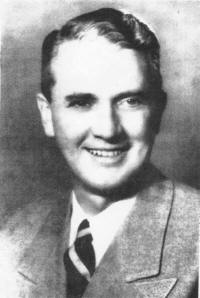
Lawrence Scroggs Singleton
(Click picture for a larger view)
|
"Colleagues in the Southern California Component of the Angle Society, as well as a host of friends elsewhere, share the loss of Lieutenant-Colonel Lawrence Scroggs Singleton
with his survivors. Scroggs was killed in the tragic crash of a Globemaster C124, November 22, 1952, en route to Alaska. Besides his father, Dr. Lawrence G. Singleton,
he leaves a wife, the former Winifred J. Dobbins of Boston, Massachusetts, and a sister, Mrs. A.H. Chenault of Covina, California.
Scroggs Singleton will be keenly missed by all who knew him for he practiced friendship as well as orthodontics. He had great charm, his impulses were generous.
In his professional life he inspired affection. One can but ponder the inscrutable fate which removed him in his prime.
The son of Dr. Lawrence G. singleton and Emily Singleton was born in Beaver, Pennsylvania, November 11, 1904, and attended school there. He took his pre-dental training
at Washington and Jefferson College in Washington, Pennsylvania, received his Dental degree at the University of Southern California in Los Angeles and his Master's degree
in orthodontics at the University of California at Berkeley where he was a protege of Dr. Herman Becks.
After practicing orthodontics for a year with his father in Santa Barbara, Dr. Singleton opened an office in Westwood Village, Los Angeles. Later he augmented the
Westwood practice with one at Palm Springs, commuting between the two offices by plane. Always an aviation enthusiast, he owned a Piper and a Beachcraft Bonanza.
From boyhood Scroggs had a great liking for the military. He attended the Civilian Military Training Camp at Camp Meade, Baltimore, Maryland at the age of seventeen,
and thenceforth annually until he qualified to join the National Guard. He was a member of the National Guard and a Reserve Officer for twenty years, serving in World
War II from 1941 to 1946 during which time he advanced to the rank of Lieutenant-Colonel. He was called again to the service of his country in August, 1950.
He then served on the staff of General Hudelson of the 40th Division at Camp Cooke as Chief Surgeon--the only dentist who has ever acted as Chief Surgeon in the United States
Army. Later he was transferred to Fort Lewis, Washington, until November 1, 1951, at which time he was appointed Chief Dental Surgeon for the Alaskan Army with headquarters
at Elmendorf Air Base, Anchorage, Alaska.
Between wars Dr. Singleton was president of the Southern California Component of the Angle Society (1947) and--together with Dr. George Chuck of Long Beach, California--had
developed the Precision Edgewise Arch which is manufactured under the trade name of the "Henry Preformed Edgewise Arch." Thus, through the exigencies of life as he found
it, Scroggs alternated between professional and military service. He had built up two practices and was preparing for a third. He was optimistic by nature and planned
for the future with confidence when the dentists of Alaska urged him to take the Board, which he passed with the highest grade. It had been his intention to practice
orthodontics in Anchorage upon his retirement from the army in the summer of 1953. He would have been the sole orthodontist in the Alaskan area.
On November 1, 1952--having taken a five-day leave, he had come to the States to gather up his equipment for shipment. On his return trip, the Globemaster, with fifty-two
service men aboard, struck snow-covered Mount Gannet at full speed. Members of an Air Force party detailed to investigate the crash reported the resulting explosion "left
no trace of anything."
His friends and confreres proudly honor the memory of Lieutenant-Colonel Scroggs Singleton, while in their heart they say, 'Hail and Farewell.'" - W.N.A.
Smith, Eugene
|
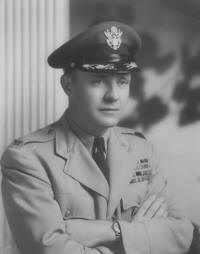
Col. Eugene Smith
(Click picture for a larger view)
|
Col. Eugene Smith was the eldest child of Pat and Mary Smith, and his family's story is the American story. He was born in Ireland but moved to Wilmington at age 13, where
he grew up playing sports and joined the Delaware National Guard while he was still attending Salesianum High School. After spending some time at seminary and working at DuPont--a
great Delaware tradition--Gene went on Active Duty when the National Guard was federalized in the early 1940s. Colonel Smith served with honor in World War II and rose quickly
to become a highly regarded military investigator with the Office of Strategic Services, leading the now-famous investigation into the post-war theft of over $1 million in
jewels. Mike Smith of Wilmington, Delaware, was his sole surviving sibling when Colonel Smith's remains were laid to rest in 2014.
--
Gene Smith was born in County Cavan Ireland. His family immigrated to the United States in 1926, settling on Monroe Street in Wilmington, DE.
A graduate of Salesianum School, Gene joined the Delaware National Guard. He was selected for Officers Training School and was commissioned a 2nd LT. During WWII, Gene served
as an investigator in North Africa and Europe. His work in Africa with the French earned Gene an honorary membership in the French Foreign Legion. Gene received many other
Military honors including the Bronze Star. By the end of the war, Gene achieved the rank of Colonel and was commander of the Army's Criminal Investigation Division (CID) in
Europe.
Gene transferred his investigation skills to the newly formed USAF with the Office of Special Investigations (OSI). He was selected to command the USAF Alaska Air Command's
OSI and was flying there the day of the fateful crash.
Gene was preceded in death by his parents, Patrick and Mary, his sisters Mary Badger, Susan Gorman and Margaret (Peg) Coen, his brothers John, Patrick, and Mike Smith. He
is survived by 9 nieces and nephews along with many great and great-great-grandnieces and nephews.
Colonel Eugene Smith is being brought home via Military Dignified Transfer on Thursday, July 24th, 2014. Visitation for family and friends will be held at the Doherty Funeral
Home, 3200 Limestone Road Pike Creek, on Friday morning from 8am to 9am. Mass of Christian Burial will be celebrated at 10am at St. Elizabeth's Church, Cedar and S. Clayton
Sts., Wilmington, DE 19805. Burial with full Military Honors will follow at All Saints Cemetery. In lieu of flowers, the family suggests donations to the Wounded Warrior Project.
Stearns, Earl J.
Stearns was the recipient of a Silver Star in World War II. His citation reads:
The President of the United States of America takes pleasure in presenting the Silver Star to First Lieutenant Earl J. Stearns (MCSN: 0-11132), United States Marine Corps,
for conspicuous gallantry and intrepidity as a Platoon Leader of Company D, First Battalion, Second Marines, Secnd Marine Division, during action against enemy Japanese
forces at Tarawa, Gilbert Islands, on 22 November 1943. Skillfully directing the setting up of his platoon's machine guns among the most forward elements of the assaulting
force in order to gain striking superiority over enemy weapons firing relentlessly from positions then under attack, First Lieutenant Stearns daringly led his men in delivering
withering, close-range barrages against the emplacements, completely neutralizing their fire and enabling men with TNT and grenades to close in and destroy the occupants. Fearlessly
exposing himself to the enemy's fierce resistance, he continued his same bold tactics, courageously moving his weapons into open positions and calmly and efficiently controlling
their devastating shellfire throughout repeated assaults against a fanatic enemy. By his forceful and determined leadership, his dauntless perseverance and unwavering devotion
to duty in the face of tremendous odds, First Lieutenant Stearns contributed materially to the success of the operations and upheld the highest traditions of the United States
Naval Service. - General Orders: Commander in Chief, Pacific: Serial 0647
Birthplace: Michigan. Home of Record: Long Island, New York.
Turnbull, Robert W.
Captain Turnbull was born on April 24, 1917, in
Canton, Ohio, to the late Harold and Helen Klein
Turnbull. He received a Bachelor's Degree from
Georgia Tech in 1940. He began serving his country
in the Army in 1943. He was relieved of active duty
in 1946 at the rank of Captain, Army Air Corps
Reserve. He was then recalled to active duty in the
United States Air Force in 1951.
He married the late Doris Latimer on May 11, 1940.
Surviving letters and postcards reveal the love and
devotion he had for his wife and children. The
letters, postcards and photographs further reveal
that he was a man of many hobbies including golfing,
fishing and enjoying the craftsmanship of cars,
especially ones built by the Nash Motors Company.
Survivors include: grandchildren, Sharon Sellers of
Ochlocknee, GA, Nina Willis (Greg) of Cairo, GA, and
William Jarrett Turnbull (Jennifer) of Boston, GA;
great-grandchildren, Jonathan Lee Sellers, of
Ochlocknee, GA, Joseph Baxley of Ochlocknee, GA,
Chris Sellers of Cairo, GA, and Paul Sellers, III of
Ochlocknee, GA, Taylor Ansley of Cairo, GA, Maelee
Sellers of Cairo, GA, Jane Waver Willis of Cairo,
GA, Gretchen Turnbull, Malorie Turnbull, and Avery
Turnbull; daughter-in-law, Patsy Turnbull;
son-in-law, Wayne Bonner; brother, David Turnbull
(Joan); and a host of nieces, nephews, great-nieces
and great-nephews.
Deceased family members are his wife; parents; son,
Robert Turnbull, Jr.; twin daughters, Jean Bonner
and Joan Sellers; son-in-law, Paul Sellers;
grandson, Paul Sellers, Jr.; sister, Jean Turnbull
Carper.
|
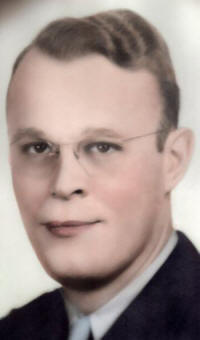
Robert W Turnbull
(Click picture for a larger view)
|
"The granddaughter of an Air Force officer who died in a plane crash 62 years ago said her dad never accepted his father’s death. Capt. Robert W. Turnbull was among 11 crewmen
and 41 passengers who died on Nov. 22, 1952, when a C-124 Globemaster aircraft crashed while en route to Elmendorf Air Force Base, Alaska, from McChord Air Force Base, Washington.
Adverse weather conditions precluded immediate recovery attempts. In late November and early December 1952, search parties were unable to locate and recover any of the service
members.
On June 9, 2012, an Alaska National Guard Blackhawk helicopter crew spotted aircraft wreckage and debris while conducting a training mission over Colony Glacier, immediately
west of Mount Gannett. Three days later, a team photographed the area and found artifacts at the site that related to the wreckage of the C-124 Globemaster. Scientists from
the Armed Forces DNA Identification Laboratory used forensic tools and circumstantial evidence in identification of 17 service members. Remaining personnel have not been recovered,
and the crash site will continue to be monitored for future possible recovery.
At that time, Turnbull’s wife, Doris, lived on Warren Avenue in Thomasville. Her husband had visited Thomasville for three weeks prior to the plane crash.
Turnbull was the paternal grandfather of Nina Willis, a Cairo resident. Her father was Robert Turnbull Jr., who was 10 at the time of his father’s death and who died seven
years ago. Willis said her dad did not talk frequently about the loss of his father. “He ways questioned did his father truly die,” Willis said. Her father wondered if
his dad might be alive and suffering from amnesia. Until Turnbull’s death, he searched the Internet for information about his father.
Willis said her dad was living in Atlanta when he saw a man on the street who looked like his father. “He almost stopped him and asked who he was,” Willis recalled.
Families of others who died in the crash have the same experience, she added. “I guess having that body is a big part of closure,” Willis said.
Turnbull’s remains were transported from Alaska to Hawaii, then to Tallahassee, Fla., and arrived Thursday at Clark Funeral Home in Cairo. Remains will be laid to rest at
11 a.m. Saturday at Barnetts Creek Baptist Church Cemetery with full military honors.
Turnbull’s widow lived for four years after his death. “She died in 1956,” Willis said. “My dad always said she died of a broken heart.” After her grandmother died, Willis’
father and younger twin sisters were raised by the their maternal grandmother, Mae Latimer, in the Pine Park community in Grady County. The family lived on U.S. 84 near Barnetts
Creek. Pasty Turnbull, Willis’ mother, lives at the site today. Willis’ brother, Jarrett Turnbull, is a Thomasville resident. Her cousin, Baxley Sellers, daughter of
one of the late twins, lives in Ochlocknee.
Along with remains, a uniform will be placed in Turnbull’s casket. Turnbull’s remains were identified through DNA obtained from nieces and nephews who live in Ohio and who
will attend the Saturday burial. Willis pointed out that of the 52 people who died in the 1952 plane crash, only 17 have been identified. The plane hit the side of a mountain
at full speed, resulting in an avalanche that covered wreckage. Remains were found in summers of 2012, 2013 and again this year, when snow and ice melted.
Willis is concerned about relatives of the 35 people who died in the crash and have not been identified. “I do feel for those family members who don’t have the closure,”
she said.
[Source: Thomasville Times Enterprise, Thomasville, Georgia, July 17, 2014, Patti Dozier, reporter]
Turner, William Irvin
|
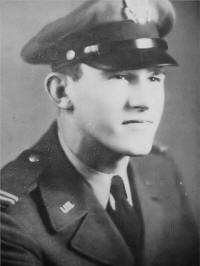
William Irvin Turner
(Click picture for a larger view)
|
1st. Lt. William Irvin Turner, 24, died November 22, 1952 while on board a C-124 Globemaster plane that crashed on Colony Glacier Mt. Gannet, Alaska. The crash site was
discovered in 2012 and his remains were identified in 2014.
Born January 17, 1928 in First Fork, Pennsylvania, he was the son of Wilbur Edward and Pearl Mae Caldwell Turner. He was a graduate of Coudersport High School, 1946, the
USAF Navigation School, 1951. He served in the US Navy and the US Air Force from 1946-1952.
William is survived by his sister, Mary Elizabeth Turner May and many nieces and nephews. Mary is the last surviving member of his immediate family. William's parents, three
brothers: George, Wilbur and Wayne Turner, and sister: Daisy Arlyne Turner Bauer have all passed away.
Friends and family are invited to William's Memorial Service, Saturday, September 20, 2014 at the Park United Methodist Church, 15 East 3rd St., Coudersport, Pa 16915. A
visitation will be held in the church from 10-11am with a service to follow at 11am, the Rev. Scott Ogden officiating. Burial will be in the Gilmore Cemetery, Sinnemehoning,
Pennsylvania with full military honors. A flag pole dedication ceremony and a flag raising will be held at the cemetery immediately following the burial service.
Unger, Leonard George
The son of William George and Florence Martha Fine Unger, Leonard Unger was born July 23, 1916 in Overland, Missouri. The family moved to Gerald, Missouri in the mid-1940s.
There were eight children in the family: Leonard (the oldest), Estelle, Myrtle, Roy, Bill, Richard, Edward and Theresa. Left to mourn his loss were Leonard's parents
and siblings, wife Geneva Smith Unger, and a small son, Raymond Richard Unger.
Leonard was a member of the U.S. Army. According to his sister Theresa: "Leonard was only on board the flight due to an ironic twist of fate. A young man from Oregon
had been named as flight engineer in the orders for the special assignment came down. That young man was due to be married the weekend he was ordered to Alaska. Leonard offered
to take his place. He told our family that he would be gone a week on a secret mission to Alaska. It was while returning from this assignment, back to their home base
in the state of Washington that the plane went down."
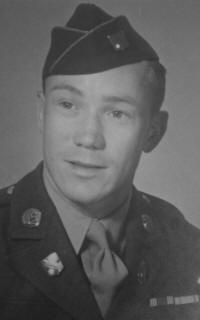
Leonard George Unger
(Click picture for a larger view) |
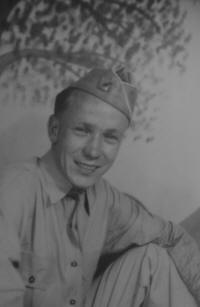
Leonard George Unger
(Click picture for a larger view) |
VanFossen, Robert Dale
|
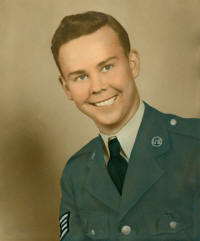
Robert Dale VanFossen
(Click picture for a larger view)
|
|
Back to Page Contents
Photographs
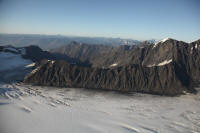
(Click picture for a larger view) |
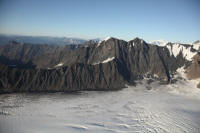
(Click picture for a larger view) |
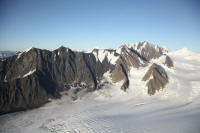
(Click picture for a larger view) |
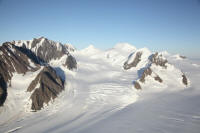
(Click picture for a larger view) |
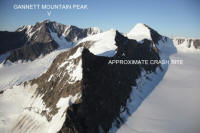
(Click picture for a larger view) |
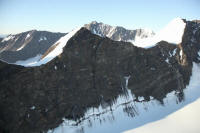
(Click picture for a larger view) |
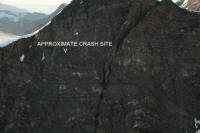
(Click picture for a larger view) |
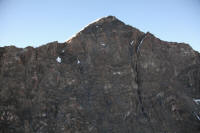
(Click picture for a larger view) |
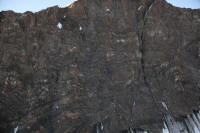
(Click picture for a larger view) |
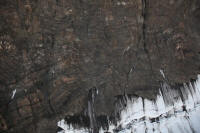
(Click picture for a larger view) |
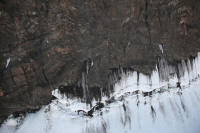
(Click picture for a larger view) |
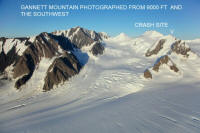
(Click picture for a larger view) |

(Click picture for a larger view) |
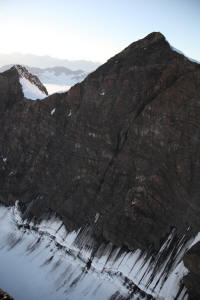
(Click picture for a larger view) |
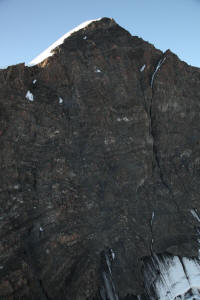
(Click picture for a larger view) |
[KWE Note: Above photos were taken by Calvin Hall.]
Back to Page Contents
Newspaper Articles
Anchorage Daily Times
PDF Format
Clue Spurs Plane Search
Globemaster Carrying 52 Men Missing
"Anchorage, Alaska (AP) -- A faint radio signal was the only tenuous clue Monday to the fate of 52 men aboard a giant C-124 Globemaster which vanished Saturday night over
the Gulf of Alaska.
Twenty-four search planes were poised here ready to fan out when weather permits over the 150 miles to tiny Middleton Island, the four-engined transport's last check-point.
The weather outlook was poor.
The 41 Army and Air Force passengers and 11 crewmen were listed officially Sunday as missing in the continuing plague of U. S. military air disasters throughout the world.
Third Disaster.
It was the third U. S. military air disaster in Alaska in 15 days, involving 91 men, and the sixth throughout the world during that period. The six planes carried a total
of 162 passengers and crew -- eight survived and the others are missing.
A limited search Sunday, hampered by fog, light rain and low ceiling, turned up no trace of the Globemaster, which vanished on a 1,400-mile flight from McChord Air Force
Base, its home field near, Tacoma, Wash., to Elmendorf Base at Anchorage.
Largest Transport
The huge, four-engine transport, largest in military use, last reported by radio at 9:47 p.m. PST last night, over Middleton Island, about 150 miles southeast of here in
the Gulf of Alaska.
The Globemaster, operated by the Military Air Transport Service (MATS),
was flying at 9,000 feet altitude on schedule 6 hours and 17 minutes out of McChord and only 46 minutes from Anchorage. Then there was silence.
From tiny Middleton Island, the big plane's course took it over about 50 miles of water and 100 miles of land described by veteran fliers as among "the most rugged in the
world."
To the right of its route is a mountain range studded with towering, glacier-covered peaks of 10,000 feet or more. On course are smaller mountains in an almost impenetrable
wilderness."
- Walla Walla Union-Bulletin Washington 1952-11-24
-----
Sixty years later, local man's remains finally found?
(Written by Jason Hunsicker)
Kirksville, Mo. — A northeast Missouri serviceman may soon be properly laid to rest nearly 60 years after he and 51 others were lost aboard a military cargo
plane that crashed into an Alaskan mountain.
U.S. Air Force Airman 3rd Class Wayne Dean Jackson, then 21 and of Downing, Missouri, was among those flying in a Douglas C-124-A Globemaster II from McChord
Air Force Base in Washington to Elmendorf Air Force Base in Anchorage on Nov. 22, 1952. Less than an hour from their destination, the plane apparently crashed into Mount Gannett
and exploded. A search effort ensued, but was cut short by poor weather conditions and no remains were recovered. With the wreckage’s location and inhospitable weather,
the families of those killed in the crash had been left without closure for the last six decades.
But on June 10, Reuters reported an Alaskan National Guard crew on a training mission spotted pieces of an aircraft and bone fragments atop a glacier,
14 miles from the point of the plane’s crash site. A team from the Joint POW/MIA Accounting Command (JPAC) was sent in to collect evidence and those fragments, confirming the
wreckage was of the Globemaster II and giving family members and friends hope their missing loved ones could finally be brought home.
Vicki Kelso Dodson, formerly of Downing and now of Iowa, is one of many hoping some of the recovered materials will help put Jackson to rest. Dodson grew up
in Downing across the street from the home of Clarence and Hazel Jackson and their son, Wayne. She called Clarence and Hazel “second parents to me” as they often cared for
her when Dodson’s mother was working. And she called Jackson, who was 14 years her elder, “my big brother.” “He was always the neatest person,” Dodson said. “He always
had a wonderful smile on his face. He would play anything I wanted to play.”
Born September 5, 1931, Jackson was a 1949 graduate of Downing High School. According to an article that appeared in the May 8, 1952 edition of The Downing
News, Jackson had once been stationed at Lackland Air Force Base in San Antonio, where he underwent his basic airmen indoctrination course in preparation for Air Force technical
training.
Since learning of the recovered remains, Dodson has helped contact some of Jackson’s closet living relatives, cousins and World War II veterans Robert Bruner
of Downing and Max Bruner of Memphis, Mo. They have sent their DNA samples to the JPAC laboratory in Hawaii for comparison.
Robert Bruner said he recalled Jackson “was a good kid,” but didn’t get to know him well. Robert Bruner was serving in the military as Jackson grew up, and
when Bruner returned Jackson entered the service.
Dodson said when Hazel died 12 years ago she found a magazine rack next to Hazel’s couch. It contained all of Jackson’s Air Force service information, as well
as letters he’d written home. One was dated Nov. 21, 1952, the day before his doomed flight. Jackson wrote to his mother he had been given a choice to be stationed in Greenland
or Anchorage, and chose the latter because “Greenland is too cold, and Alaska is cold enough.” “She kept that letter and read it so many times, it is in tatters,” Dodson said.
The magazine rack and documents now sit next to Dodson’s couch. After all this time, she never expected she’d need them.
Dodson said Clarence and Hazel had a grave stone in place between their own, awaiting their only child’s return. “[Hazel’s] dream was to bring him home,”
Dodson said. “I’m going to do everything I can to make that happen.” If they can gain some closure, Dodson said a memorial service will be held that is sure to draw Jackson’s
other cousins – EllaB Eiffert, of Downing, Loubell Davis, of Granger, Missouri, Dell Dellinger of Greenfield, Iowa, and Leo Waddle, of Rock Island, Illinois – other extended
family and friends. “We’ll all be there, everybody,” Dodson said. “This will be a joyous occasion because we will be bringing him home.”
Kirksville (Missouri) Daily Express, July 08, 2012
Back to Page Contents
Readers' Comments
|
| |
| |
| |
| |
|




































